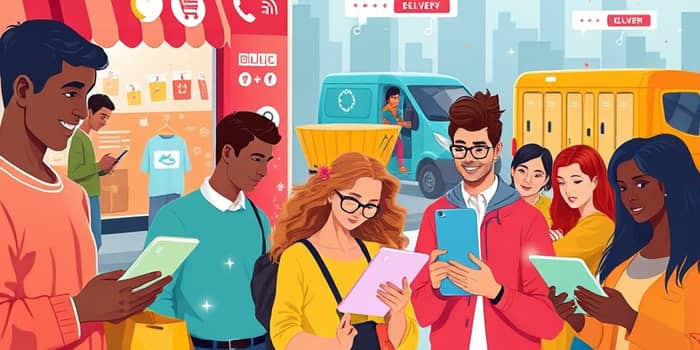
In an era defined by rapid technological advances and evolving shopper needs, the online retail landscape continues to transform. Businesses that understand and respond to these shifting consumer preferences will thrive in 2025 and beyond. This article explores the key drivers of change, offers actionable strategies, and inspires retailers to innovate boldly.
The momentum behind e-commerce remains strong. In the United States alone, 21% of all retail purchases are expected to occur online in 2025. This shift reflects a broader global trend: rising internet penetration, widespread mobile adoption, and digitalization in emerging markets.
Consumers now spend an average of $3.723 billion daily online in the U.S., and the population of online shoppers is projected to expand from 273.49 million in 2024 to 288.45 million in 2025. These numbers underscore the need for retailers to optimize every aspect of their digital channels, from website performance to customer service and fulfillment.
Modern shoppers demand more than just products—they seek experiences that are effortless, personalized, and consistent. As a result, retailers must adapt to:
Moreover, 81% of consumers expect a seamless experience across devices—meaning their cart, preferences, and personal details should synchronize effortlessly between desktop, mobile, and in-store kiosks.
Social media platforms have evolved into powerful retail channels. Over 80% of consumers now research brands on Instagram, TikTok, or Facebook before buying, and nearly 70% make purchases directly through social feeds. Influencers remain a potent force: about 49% of buyers have purchased items after viewing influencer posts, especially among Gen Z and Gen Alpha.
AI further enhances the shopping experience by delivering tailored recommendations, virtual try-ons, and dynamic pricing. In fact, 92% of consumers are already using or willing to adopt AI-driven shopping features and insights. With automated analytics, retailers can monitor real-time trends, personalize marketing offers, and predict inventory needs more accurately than ever.
Cart abandonment continues to challenge retailers, with 13% of shoppers leaving purchases behind due to limited payment options. Offering a variety of payment methods—credit cards, digital wallets like Apple Pay and PayPal, and Buy Now Pay Later (BNPL) services—can significantly reduce abandonment rates.
Efficient fulfillment is equally critical. Real-time shipping quotes, automated integration with carriers such as USPS, UPS, and FedEx, and eco-friendly last-mile solutions elevate customer satisfaction. Many consumers now favor sustainable options, such as parcel station deliveries, over traditional home drop-offs.
The most successful retailers will embrace a hybrid model that bridges online and offline experiences. By maintaining consistent branding, personalized service, and unified inventory systems, they can offer customers the flexibility to switch channels at any point in their journey.
Looking ahead, expect these developments to shape the next phase of online retail:
Retailers should also elevate their sustainability efforts and transparent storytelling. Younger generations, in particular, respond to brands that demonstrate genuine commitment to environmental and social values.
Finally, continuous innovation—whether through augmented reality try-ons, voice shopping, or subscription models—will differentiate leaders from laggards in a competitive marketplace.
Adapting to shifting consumer preferences is not merely about adding new features or channels; it requires a holistic reimagining of how products are discovered, purchased, and delivered. Retailers that prioritize real-time personalized marketing strategies, flexible fulfillment, and authentic engagement will forge deep connections with customers and secure long-term loyalty.
By grounding decisions in data, embracing cutting-edge technology, and keeping the customer journey at the core of every initiative, brands can turn challenges into opportunities. Now is the moment to innovate with purpose—and deliver experiences that delight shoppers today and into the future.
References













